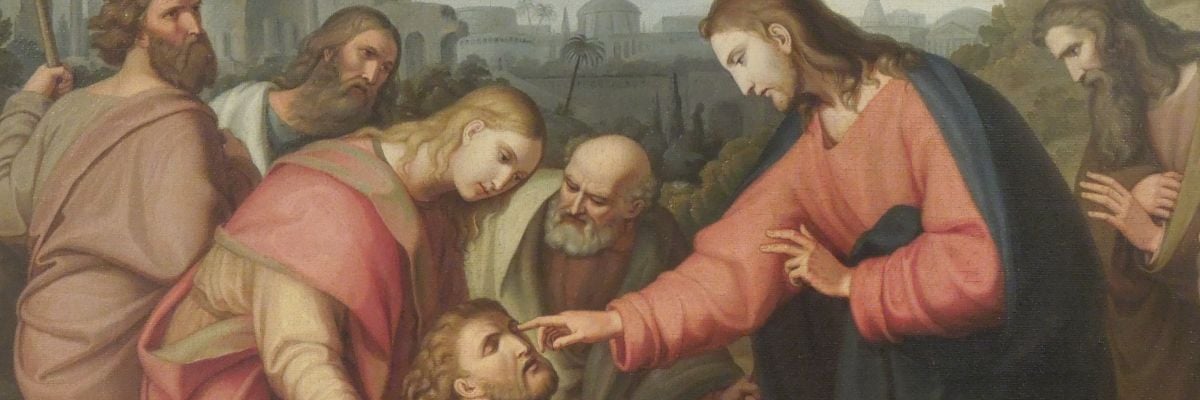
In our quest to discover whether Jesus is Emmanuel (God with us), it is necessary that we concern ourselves with Jesus’ miracles. For if Jesus performed miracles, then we have good reason to believe that Jesus is who he says he is: the exclusive son of the Father (John 10:36) who is equal to the Father (John 10:33). God the Father would not bestow such power upon Jesus if Jesus were a blasphemer.
But how do we know the miracle stories recorded in the New Testament are historically reliable? They could be fabrications, or the products of legendary developments over time.
A full examination of Jesus’ miracles would take more space than we have here. For the present, let’s just focus on Jesus’ healing miracles. Was Jesus really a miraculous healer as the New Testament says he was? Let’s take a look.
Historians use various criteria for assessing the historicity of a saying or event in ancient literature. But one of the most reliable is multiple attestation. This refers to the principle that the more often an event or saying appears in independent sources, the more probable its historicity.
It’s important to note, however, that the converse is not true: the less often an event or saying appears in independent traditions does not make an event less probable in its historicity. To affirm the converse would be to commit the logical fallacy of negating the antecedent. This fallacy takes the form:
- If A, then B.
- Not A.
- Therefore, not B.
This fallacious reasoning can be shown in the following example: “If I am in Los Angeles, then I am in California. I am not in Los Angeles. Therefore, I am not in California.” The conclusion doesn’t follow—because I’m sitting at my desk at home in Murrieta, California, writing this article.
Similarly, the lack of multiple attestation does not disprove authenticity or point to an event or saying being legendary. It may instead lack multiple attestation, for example, because its author(s) did not hear about a particular event or saying or chose to exclude it from the document for some reason.
Traditionally, it was commonly thought that each Gospel represented an independent source. But since the time of literary criticism, it has been more commonly held that Mark wrote his Gospel first, and that Matthew and Luke relied heavily on it.
Furthermore, many historians believe that Matthew and Luke also shared a common source that Mark did not use or know of—historians call it “Q,” which refers to Quelle, the German word for “source.” The Q theory is not without its doubters—Mark Goodacre is just one scholar who calls it into question—but for the sake of this article we’ll go with the majority consensus.
Matthew and Luke also drew from their own unique sources that are not found in Mark or Q. And since the Johannine source has also long been recognized as independent of the Synoptics (Matthew, Mark, and Luke), we have five independent traditions for the four Gospels: Mark, Q, M (Matthew special), L (Luke special), and J (the Johannine tradition).
That Jesus was a healer overwhelmingly meets the criterion of multiple attestation. Let’s start with the specific narratives in which Jesus’ healing miracles are recorded. There are sixteen distinct (non-overlapping) accounts in four out of the five independent sources: Mark, Q, L, and J. Mark records eight healing narratives: two cures of paralytics (2:1-12 and 3:1-6), two cures of blindness (10:46-52 and 8:22-26), one cure of leprosy (1:40-45), and three cures that involve various diseases (fever in 1:29-31, a hemorrhage in 5:24-34, and deafness in 7:31-37).
The one healing miracle in the presumed Q source is the cure of a centurion’s servant at a distance (Luke 7:1-10, Matt. 8:5-13), to which John also attests (John 4:43-54). These sources not only contribute to the attestation of Jesus’ healing miracles in general but provide multiple attestation for a single healing account.
The tenth healing narrative does not involve a specific event, but a list of healings: healing of the blind, the lame, lepers, and the deaf. Because this is found in both Matthew (11:2-6) and Luke (7:18-23), it’s believed to come from the Q source.
The special Luke tradition (L) records four healing narratives: one involving a paralytic (13:10-17), another concerning the curing of leprosy (17:11-19), and two cures of various ailments (dropsy in 14:1-6 and the ear of the slave to the high priest in 22:49-51).
Finally, John relates two healings: one that involves the healing of a paralytic (5:1-9) and the other the healing of a blind man (9:1-41).
The sixteen non-overlapping accounts of healing miracles in four out of five independent sources for the Gospels gives us good reason to conclude as a matter of history that Jesus was a healer.
But that’s not all. There’s more!
Jesus’ healings are also mentioned in non-narrative contexts—that’s to say, they are mentioned in passing. For example, Mark tells us that those who were sick touched the fringe of Jesus’ garments and were “made well” (Mark 6:56). He also records in passing that Jesus healed many sick people who were brought to the door of Simon’s mother-in-law’s house (Mark 1:32-34). In Mark 3:7-10, Jesus was forced to get into a boat because many who were diseased were pressing upon him to touch him “for he had healed many” (v. 10).
Jesus identifies himself as the “anointed” one who would give “recovery of sight to the blind” (Luke 4:16-21). The passing references to the disciples’ performing healing miracles count as evidence as well, since they did so with Jesus’ authority (Luke 9:6, 10:17-30; Mark 3:15; cf. Matt. 10:1).
Finally, we can add to the above data particular miracle stories that meet other historical criteria. I’ll consider just one here: Jesus’ healing of the blind man Bartimaeus in Mark 10:46-52. It has a few Semitic details that reveal a connection to the early Palestinian community, which for historians is an indication of historicity. One detail is the use of the Aramaic word Rabbouni, which translates as “Master.” It also includes “Son of David,” which is a title that is not found in the earliest Christian community and thus probably dates to the time of Jesus’ ministry.
The historicity of this healing miracle is further supported by details that don’t serve any apologetical or catechetical purposes. For example, Mark names the recipient of the miracle (Bartimaeus), he ties the named individual to a geographical place (the “roadside” outside Jericho), he marks the point of Jesus’ ministry when the healing takes place (on his way up to Jerusalem for his passion and death—Mark 10:32), and he marks the time of the miracle: shortly before Passover (cf. Mark 14:1).
These details strongly suggest that the story comes from an eyewitness. How else would they be known? And according to biblical scholar John P. Meier, it’s probable that the eyewitness was Bartimaeus himself.
This is just one example among many where the narratives of Jesus’ healing miracles meet one of the historiographical criteria. We’ll have to save the others for another time, but for now, suffice to say that when we combine the account of Jesus’ healing of Bartimaeus with the multiple attestation evidence of Jesus’ healing miracles throughout four of five independent Gospel sources, we have good reason to conclude that the New Testament portrait of Jesus a miraculous healer is historically reliable.
And if he performed healing miracles, that’s a good reason to accept him for who he says he is: “I Am” (John 8:58).



